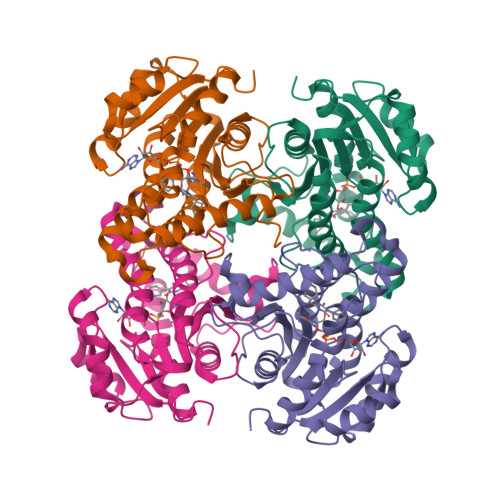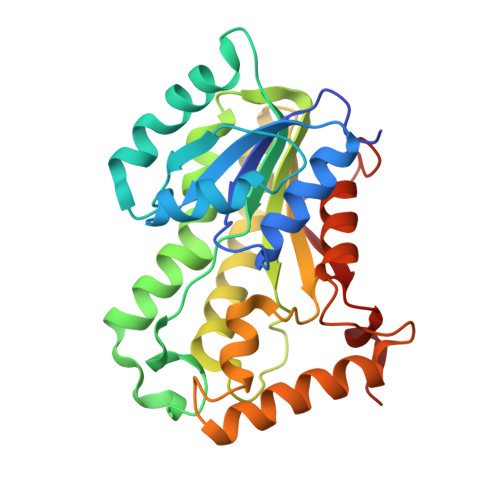Direct inhibitors of InhA are active against Mycobacterium tuberculosis
Manjunatha, U.H., Rao, S.P.S., Kondreddi, R.R., Noble, C.G., Camacho, L.R., Tan, B.H., Ng, S.H., Ng, P.S., Ma, N.L., Lakshminarayana, S.B., Herve, M., Barnes, S.W., Yu, W., Kuhen, K., Blasco, F., Beer, D., Walker, J.R., Tonge, P.J., Glynne, R., Smith, P.W., Diagana, T.T.(2015) Sci Transl Med 7: 269ra3-269ra3
- PubMed: 25568071
- DOI: https://doi.org/10.1126/scitranslmed.3010597
- Primary Citation of Related Structures:
4R9R, 4R9S - PubMed Abstract:
New chemotherapeutic agents are urgently required to combat the global spread of multidrug-resistant tuberculosis (MDR-TB). The mycobacterial enoyl reductase InhA is one of the few clinically validated targets in tuberculosis drug discovery. We report the identification of a new class of direct InhA inhibitors, the 4-hydroxy-2-pyridones, using phenotypic high-throughput whole-cell screening. This class of orally active compounds showed potent bactericidal activity against common isoniazid-resistant TB clinical isolates. Biophysical studies revealed that 4-hydroxy-2-pyridones bound specifically to InhA in an NADH (reduced form of nicotinamide adenine dinucleotide)-dependent manner and blocked the enoyl substrate-binding pocket. The lead compound NITD-916 directly blocked InhA in a dose-dependent manner and showed in vivo efficacy in acute and established mouse models of Mycobacterium tuberculosis infection. Collectively, our structural and biochemical data open up new avenues for rational structure-guided optimization of the 4-hydroxy-2-pyridone class of compounds for the treatment of MDR-TB.
Organizational Affiliation:
Novartis Institute for Tropical Diseases, 138670 Singapore, Singapore. Yong Loo Lin School of Medicine, National University of Singapore, 119228 Singapore, Singapore. manjunatha.ujjini@novartis.com thierry.diagana@novartis.com.




















